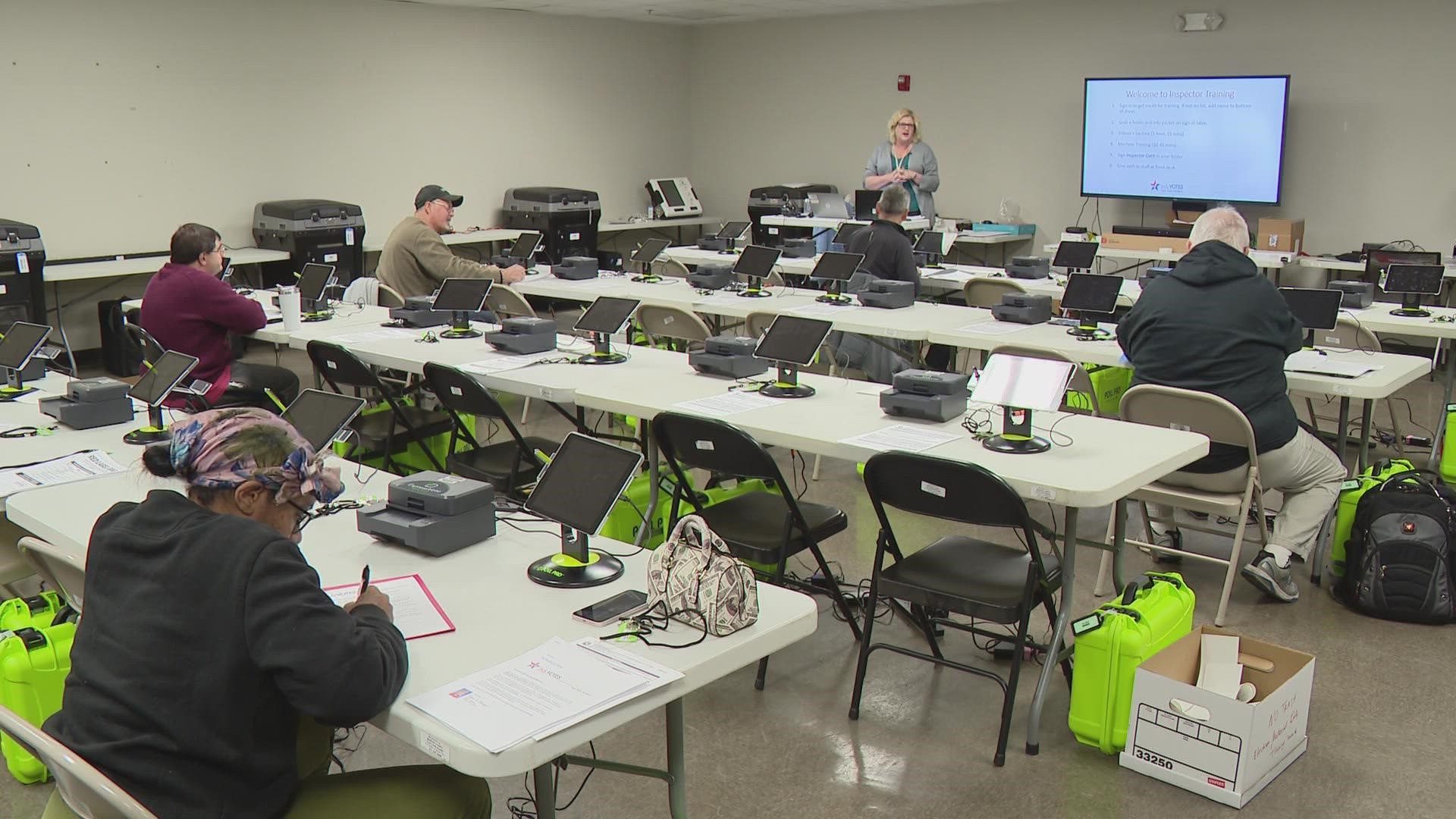INDIANAPOLIS — “Welcome, welcome to the fun. You can do it,” Shannon Samson with the Marion County Election Board told a half-dozen poll worker trainees who gathered to learn how to run an election in Marion County.
The people who came to one of several training sessions going on right now were there to learn how to be poll inspectors, the people who oversee an election center and the clerks helping voters cast their ballots.
“The inspector, we like to call them, the boss of the precinct,” Samson explained. “They’re the person in charge.”
First-time poll inspector trainee Steve Presson was there, not so much because he wants to be a boss on Election Day, but because he wanted to learn and to understand the process.
“I’ve always been interested in politics,” Presson said.
“Especially with the controversies from 2020 about election fraud, so that when I hear people trying to argue there is, I can say, ‘I’ve been there, and no, there’s not,’” said Presson.
13News brought our cameras inside poll worker training to see how it worked. We sat alongside some of the people who will be working on Election Day, your neighbors, Republicans and Democrats, who were there learning how to set up and run a polling site.
Some of the training involved learning how to log into three kinds of machines. Each poll pad, where voters check in, is manned by a Republican and a Democrat, who enter passwords to start the devices. They each initial a voter’s blank ballot after checking them in to vote.
A printer stamps a barcode on that ballot, based on where the voter lives. That barcode tells a second machine, the express vote machine, which races to pull up on a touch screen after the voter inserts the blank ballot into it.
The voter then makes their selections on the screen.
When a person is done voting, the express vote machine ejects the voter’s ballot, so he or she can verify their selections. The voter feeds their ballot into a third machine, the DS-200, which electronically records the votes on a removable device that is similar to a computer thumb drive.
The voter’s paper ballot drops into a locked bin inside the DS-200 to serve as a backup record.
Inspector trainees also learned how to shut down all the machines when the polls close, as well as the steps to take to print out a paper tape showing the number of votes cast.
“You have to wait until the screen is absolutely dark before you take this stick out, this media stick,” Samson explained, showing trainees how to remove the device on which all the votes are stored electronically.
When it’s removed, that device gets placed in a sealed envelope.
And that was just the training to understand how the machines work. Instructors also went over who’s allowed into a voting center on Election Day.
“Poll workers, security, media watchers and poll watchers, no one else,” said Samson.
“Everyone there has credentials and is allowed to be there, and then obviously the voters,” she continued, also explaining that poll watchers are different than poll workers.
Poll watchers are appointed by each party and do just what their name says - they watch.
“Watchers appointed by the party can observe and ask for a public vote count but must not observe any password entry or interfere with voters,” Samson said.
Also covered in training, what kind of photo ID voters must show at the polls and what information needs to be on it.
“It must be issued by the state of Indiana or the federal government,” said Samson.
Trainees also learned what to do if a voter shows up without an ID, or if the name or address on their identification doesn’t match the state’s voter registry, or if a voter’s name doesn’t show up on the registry at all.
In some situations, a voter will have to cast a provisional ballot, which means the county election board will decide later at a public hearing whether that ballot gets counted.
“There’s very few circumstances where someone would need to fill out a provisional ballot,” Samson said. “If you’re filling out a whole bunch of these, something’s terribly wrong and we need to chat.”
Training also covered how to collect absentee ballots at the voting center.
“Indiana law is very clear on who is allowed to bring a ballot that is not theirs to a vote center,” said Samson.
And that will require the person dropping off ballots that aren’t theirs to fill out some extra paperwork.
So, what happens if someone shows up to vote and the system shows their absentee ballot has already been recorded? Inspector training went over that scenario, too.
“That means we received it. That means you done voted. We got a vote on record for you. You can’t vote twice in any election, sorry,” said Samson. “If they say, ‘Voter fraud! No way! Someone filled it out for me,’ issue them a provisional ballot, write what they told you on this envelope. I promise you; we will investigate that."
And that puts future voting site inspector Presson, a voter himself, at ease, knowing if there’s an issue at the polls, it’s going to be investigated.
“We need to get some word out that the election process is good, that there’s nothing wrong with it. It’s been working for us for a long time, really well,” he said.
What other people are reading:

